|
In December we spet
a couple of days in the Peak District visiting our
son. We had realised that the weather would be poor
(we just missed the snows of storm Bett!) so we
decided to go to Macclesfield and visit the Silk
Museum.
Macclesfield
was once the world's largest producer of finished
silk, with 5000 looms and 71 mill factories.
|
|
Sheila Viner reported on her visit to Macclesfield
Silk Museum in
newsletter 120 (Spring 2018), but lamented that
the adjacent associated Paradise Mill was not open
that day. We
were able to book a guided tour of Paradise Mill,
which houses the jacquard hand looms as well as
visiting the free part of the museum, which is
housed in the former 1879 School of Arts building (right).
On entering the museum, we were slightly startled to
find a whole room full of Egyptian artefacts which
were donated by Marianne Brocklehurst and Mary
Booth, the two Victorian explorers who collected
them. We then progressed to several rooms full of a
wide range of textile (mostly silk) machines, which
are the ones that Sheila described. |

|
|
Here are a few more examples from the museum.
First, two mechanised Jacquard looms.
|
|
Below is the loom that wove the famous
Macclesfield silk pictures between 1936 and
1989. Each picture took a year to produce.
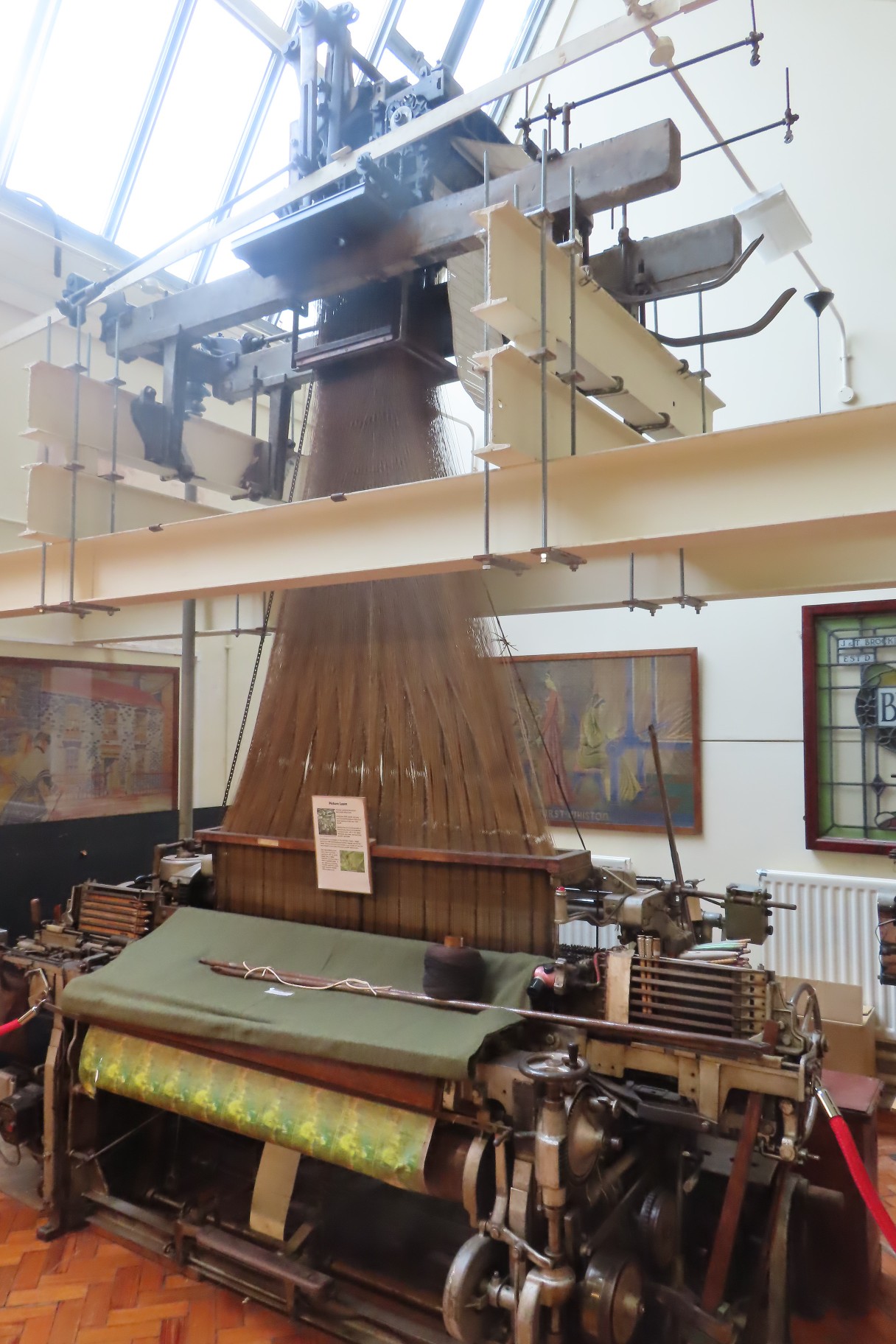
|
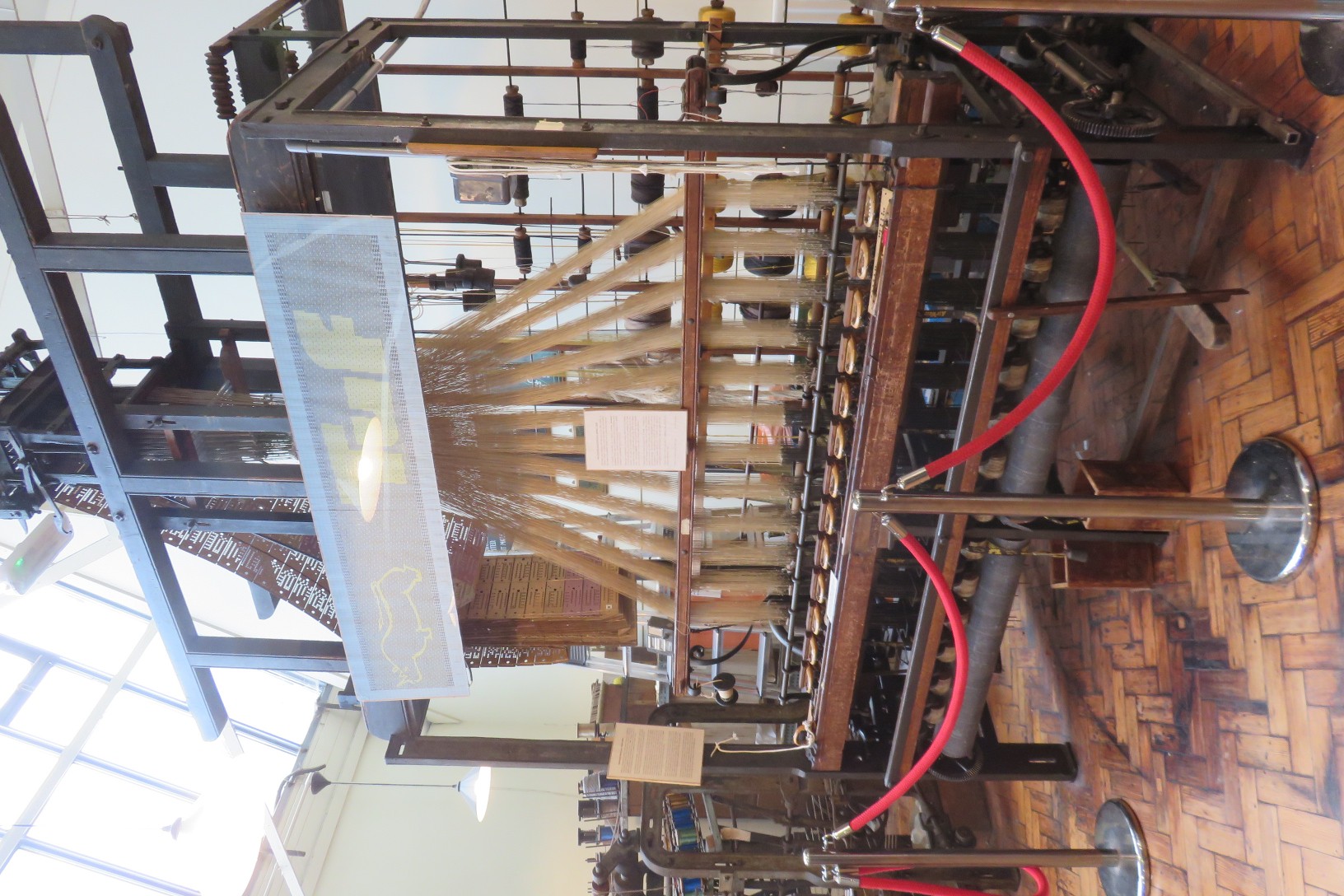
Above is a multi-shuttle 19th century ribbon loom.
When last in production it was making tags for Doc
Marten boots.
|
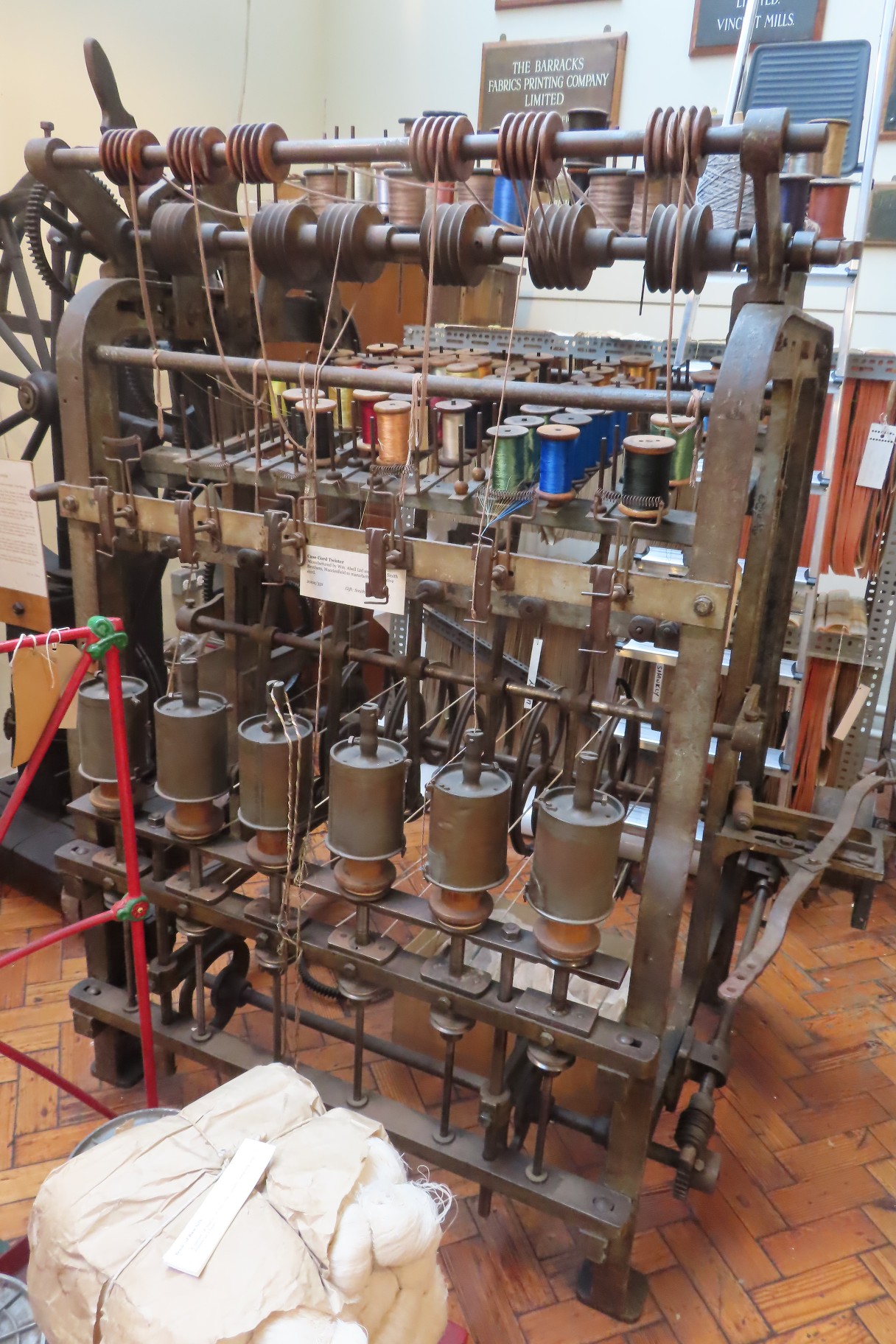 |
 |
This is a case cord twister,
manufactured by Wm Abell Ltd, and used by Smith
Brothers, Macclesfield to manufacture decorative
cord.
Like most of the machines in the museum, it is set
up with threads so that you can see how it works.
In the foreground is a parcel of hanks of raw silk
weighing about 2kg, which is called a ’book’.
|
|
This throwing machine built around the 1830s
was used by Thomas Whittle in Leek until they closed
in 1995. It was used to add a twist to the yarn by
transferring the silk from one fast moving bobbin to
a slower one. This is not to be confused with
cotton or wool which need the twist to hold the
thread together, and is therefore spun, not thrown. |
 |
|
We were very pleased to notice that almost all of
the machines in the museum were not only set up, but
had explanatory labels – in contrast to quite a lot
of other museums that we have visited.
|
|

|
At 11 o’clock we joined about 9 other people in the
foyer of the museum, and our expert and excellent
guide Daniel Hearn took us up the road to
Paradise Mill, and we climbed to the top floor
where the historic hand looms are situated. He took
us through the whole process of silk weaving, from
moth to cloth, before taking us round the weaving
floor. |
|
By 1912 a newly-established silk-weaving firm was
renting rooms in Paradise Mill. As the business
expanded they bought the mill and became
Cartwright & Sheldon who remained the owners and
principal occupants until the firm went into
liquidation in 1981. They decided to specialise in
high quality silk made by traditional labour
intensive methods using hand looms, some 70 being in
use in the 1930s. |
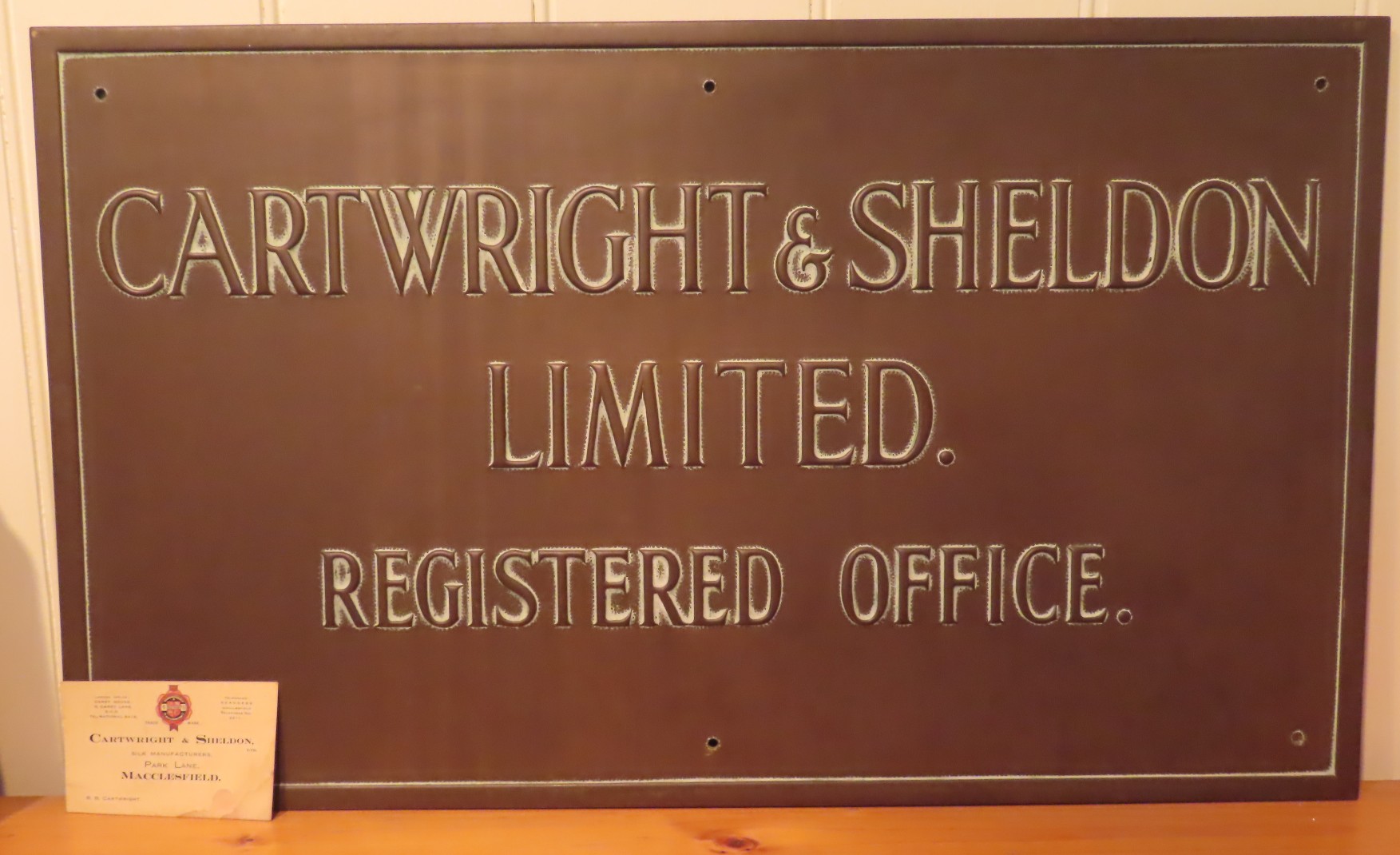
|
|
It is these looms, all dating from the 19th century,
that are on display in the mill today. Several are
being restored and are in use by technical college
students doing textile courses; there is also a
design centre. The mill has strong links with
Whitchurch Silk Mill.
Built in 1862, Paradise Mill is now the sole
survivor of Macclesfield’s industrial and creative
past. Itl has undergone
restoration with thanks to Allmand-Smith Ltd, who
own Lower Paradise Mill. This has been made
possible from a £309k National Heritage Memorial
Fund award, which allowed the Silk Heritage Trust,
who run the museum, to acquire a 125-year lease of
the top floor of Paradise Mill from owners Allmand-Smith
Ltd.
|
|
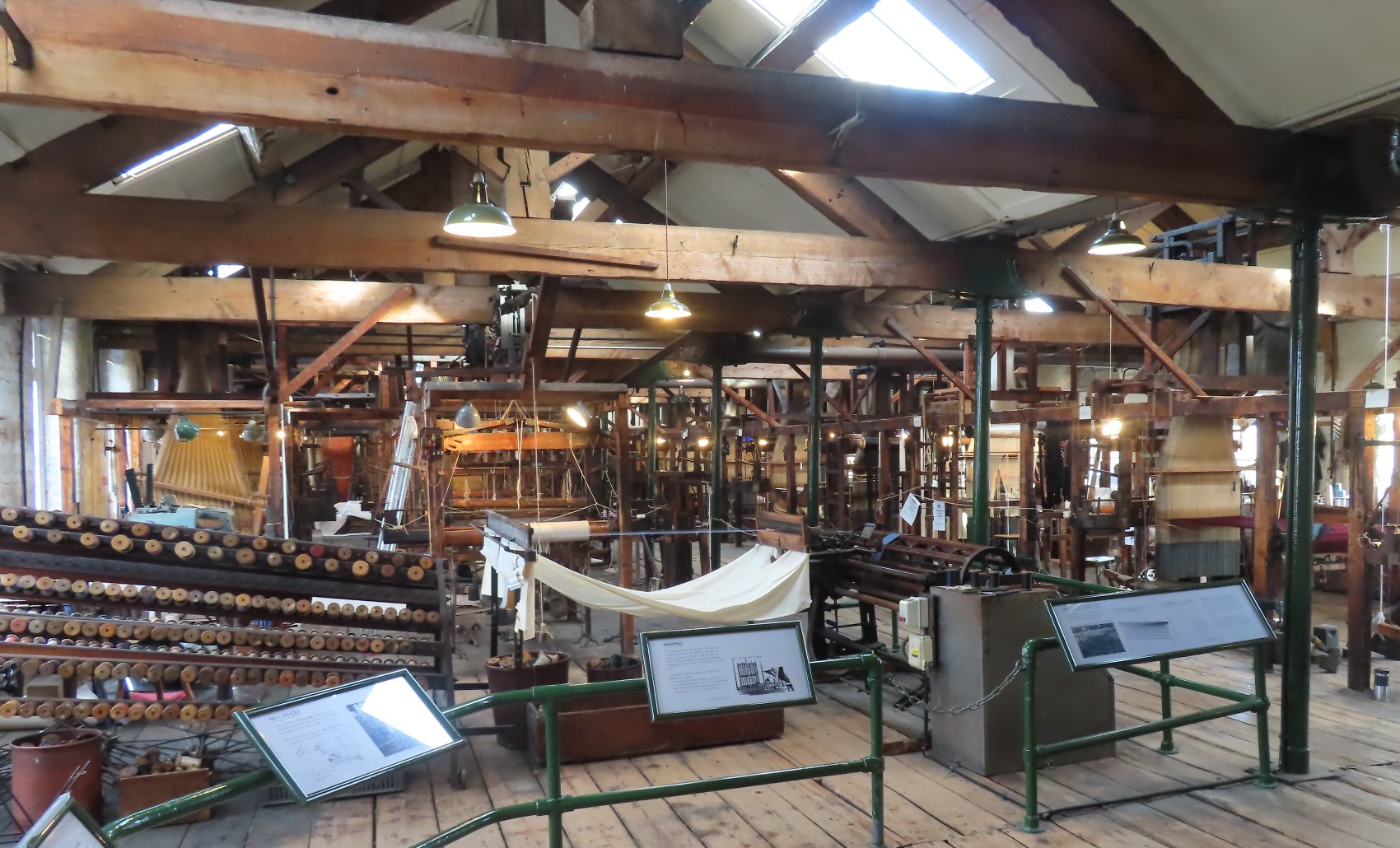 |
Looking over the viewing area rails, you can see the
warping machine which is in current use, complete
with white cloth to stop people walking though the
stretched out threads. |
|
Later in the tour we were able to walk down the
corridor between the two rows of looms. With hand
looms there is much less risk of a shuttle flying
out, so it is safe to be near them. Notice the
wooden construction and lack of drive belts.
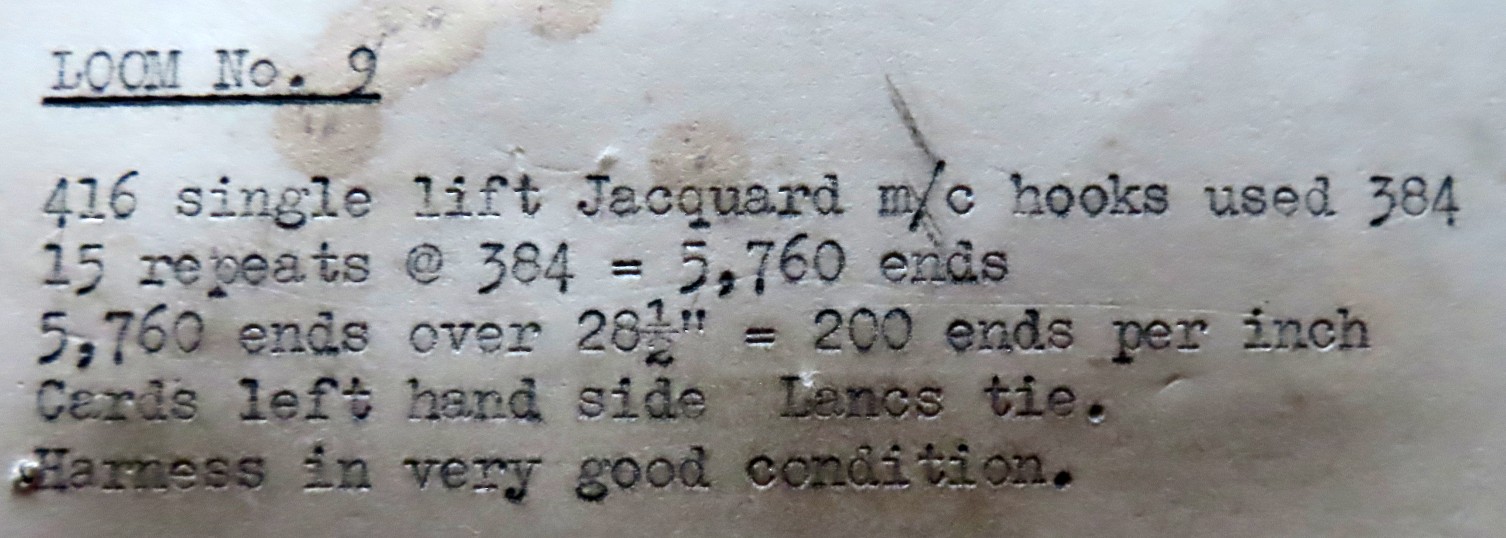 |
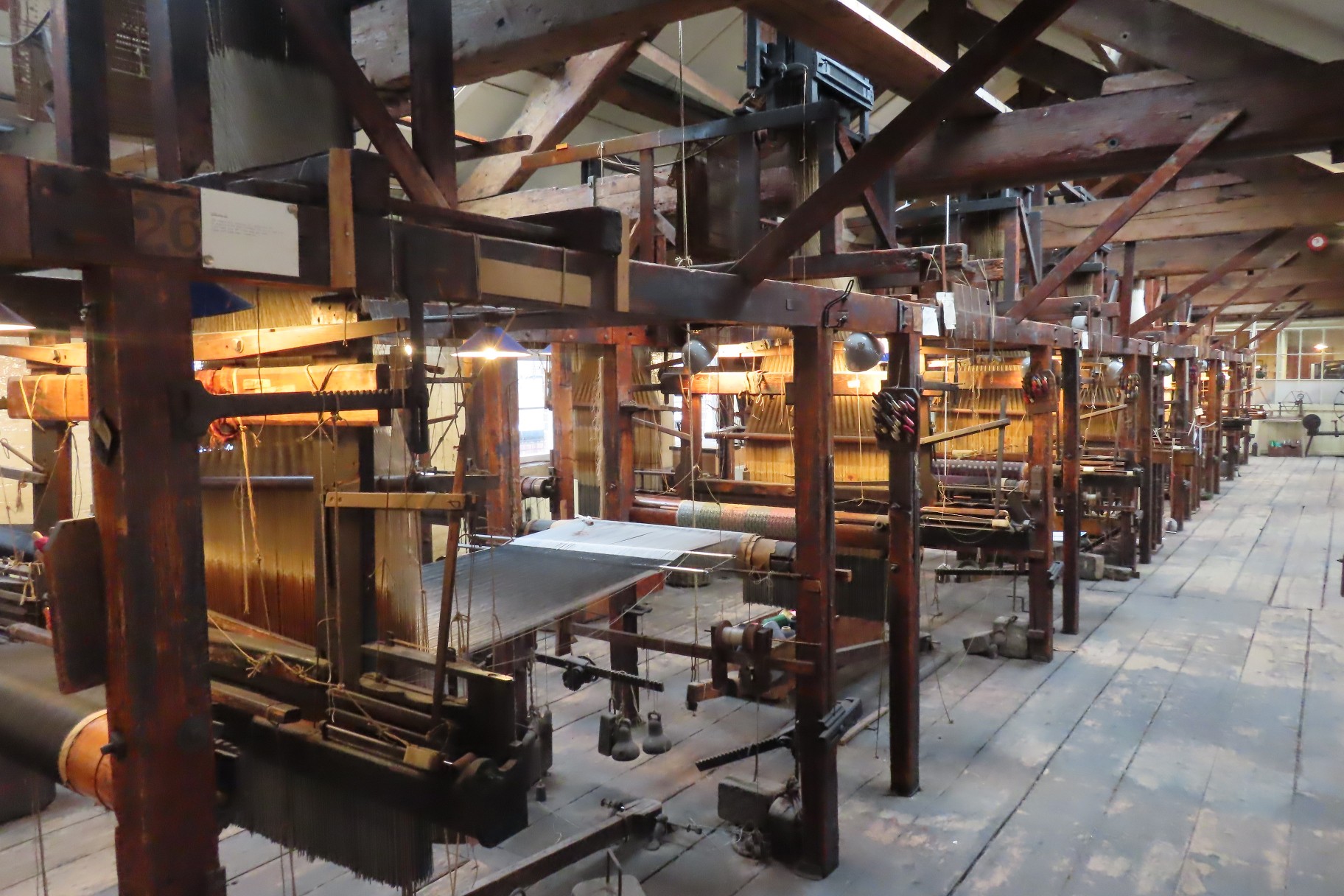 |
|
As you probably know, Jacquard looms rely on punched
cards to generate the pattern by controlling which
warp threads are lifted to allow the shuttle with
the weft to pass between them. Daniel demonstrated
the machine for cutting the cards, and explained how
the pattern is translated from the design drawing on
graph paper to holes in a sheet of card. On the
right is the Jacquard mechanism on top of a loom.
|
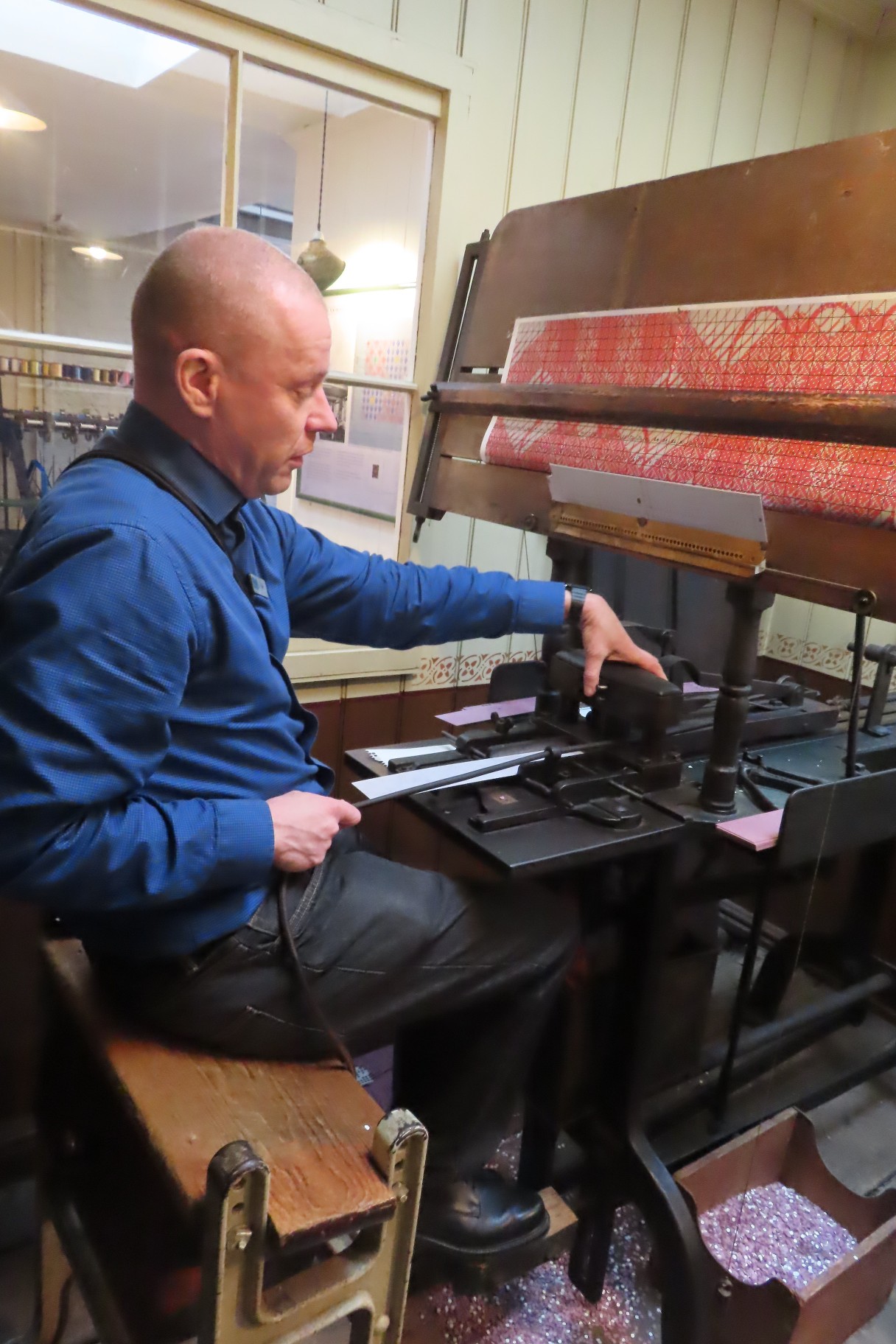 |
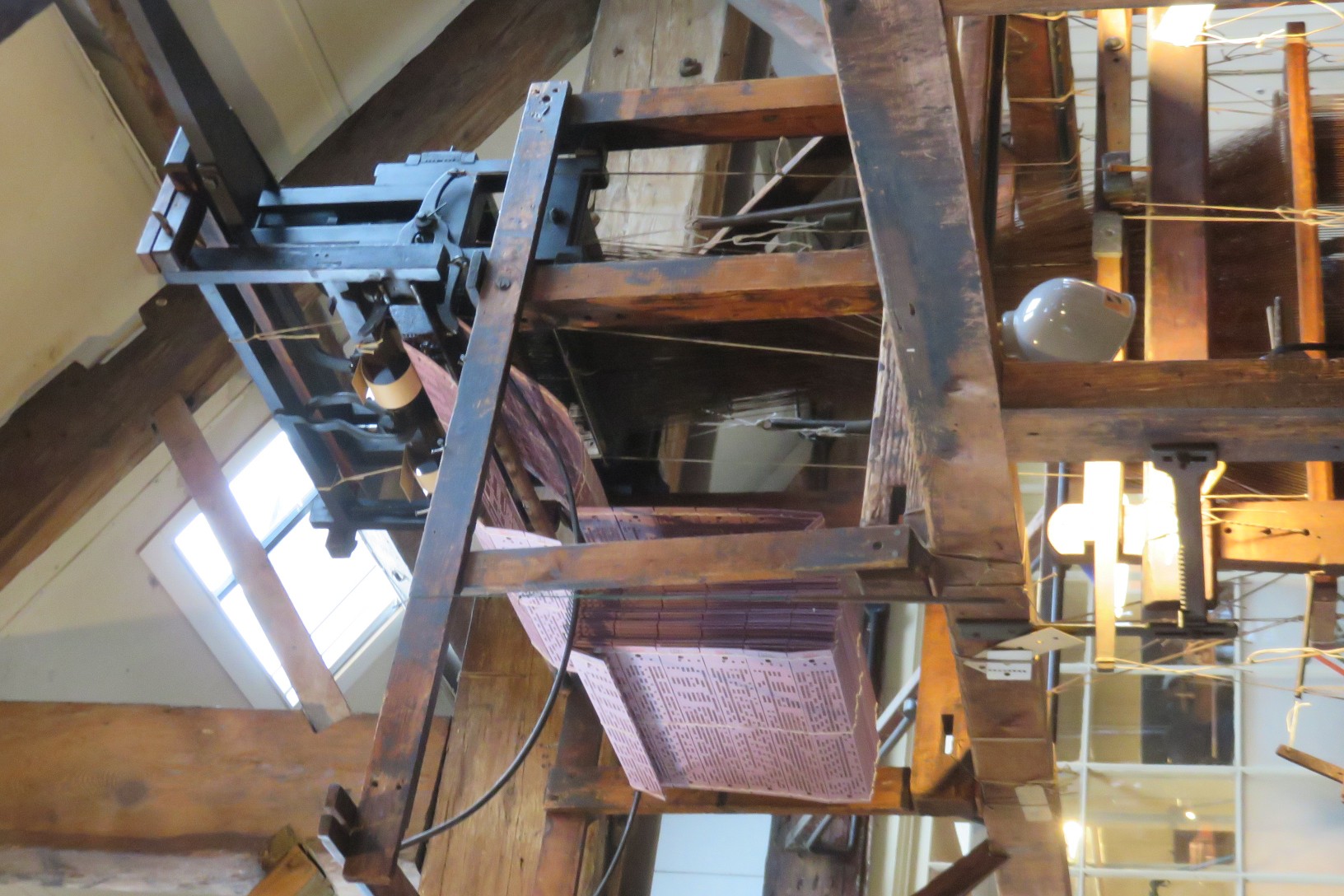 |
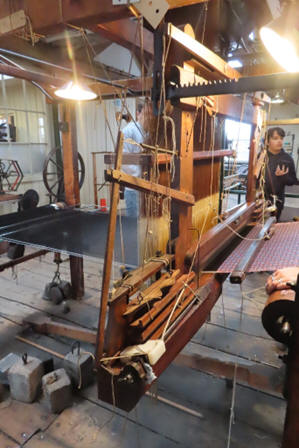 |
 |
|
We were very lucky that one of the students had come
in to do some weaving, and she kindly talked us
through the process, including the difficulty of
maintaining a rhythm and operating the foot treadle
(necessitating standing up), and pulling the reed
forward to compact the cloth after each pass of the
shuttle. It is an extremely physically tiring
operation and the effort of pressing the treadle
down was said to be the equivalent of walking 15
miles in the day.
Information from the museum website
thesilkmuseum.co.uk,
their guide booklet,
and a booklet The Last Handloom Weavers ISBN
0904532062 published by Cheshire County Museums. |




